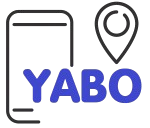Mobile Food Kiosks Selling Samosas, Smokies, Eggs, and Easy Snacks

Title of Business: Mobile Kiosk
Type: Trading
Key Products for Sale
Samosas
Smokies
Boiled eggs
Grilled maize
Chapatis
Mandazis
Other easy-to-make snacks
Technology Considerations
- Mobile payment systems (M-Pesa)
- Social media marketing (Facebook, Instagram, Twitter)
- GPS tracking for location updates
- Basic food preparation equipment (gas stove, deep fryer)
The market for the Products
- Office workers
- Students
- Commuters
- Event attendees
- Market shoppers
- General public in high-traffic areas
Key Inputs into the Business
Materials: Ingredients for snacks (flour, meat, vegetables, maize, etc.)
Labour: One to two people for preparation and sales
Equipment: Portable cooking equipment (gas stove, deep fryer), utensils, packaging materials
Transport: Mobile kiosk (cart, modified bicycle, or small van)
Product Preparation Process
- Procurement: Purchase fresh ingredients daily from local markets.
- Preparation: Prepare ingredients at home or rented kitchen space.
- Cooking: Cook the snacks using portable equipment on-site or pre-cook and heat at the kiosk.
- Packaging: Use eco-friendly packaging for takeaways.
- Sales: Sell snacks at high-traffic locations.
Quality Considerations
Ensure hygiene standards are strictly followed.
Use fresh, high-quality ingredients.
Maintain consistent taste and quality of snacks.
Obtain feedback from customers to improve quality.
Cost of Investment
Mobile Kiosk: Ksh 10,000
Cooking Equipment: Ksh 5,000
Initial Stock of Ingredients: Ksh 4,000
Licensing and Permits: Ksh 3,000 – 5,000
Marketing: Ksh 2,000
Miscellaneous: Ksh 2,000
Total Estimated Cost: Ksh 30,000
Required Operational Infrastructure
Mobile Kiosk: Cart or modified bicycle
Cooking Equipment: Portable gas stove, deep fryer
Storage: Coolers for perishable items
Transport: Reliable means to move the kiosk daily
Communication: Mobile phone for orders and customer feedback
Most Suitable or Viable Location for the Business
High-traffic areas such as bus stops, office districts, schools, universities, and markets.
Potential Sources of Investment Capital
Personal savings
Family and friends
Microfinance institutions
Youth enterprise funds
Crowdfunding platforms
Requirements for Effective Management
Time Management: Adhere to a strict schedule for preparation and sales.
Financial Management: Keep accurate records of expenses and income.
Customer Service: Engage with customers and gather feedback.
Inventory Management: Monitor stock levels to avoid shortages or wastage.
Role of Mobile Phone and ICT in the Business
- Marketing: Promote the business on social media platforms.
- Sales Tracking: Use mobile apps for sales and inventory tracking.
- Customer Interaction: Receive orders and feedback via phone or messaging apps.
- Payment Processing: Use M-Pesa or other mobile payment solutions.
Statutory Regulations and Licences
- Food Handling Certificate: From the Ministry of Health.
- Business Permit: From the county government.
- Food Vendor’s Licence: Specific to mobile food businesses.
- Compliance with Health and Safety Standards: Regular inspections to ensure hygiene.
Pricing
Samosas: Ksh 40 each
Smokies: Ksh 25 each
Boiled Eggs: Ksh 10 each
Grilled Maize: Ksh 20 each
Chapatis: Ksh 20 each
Mandazis: Ksh 20 each
Profitability
- Daily Revenue: Assuming 100 customers per day with an average spend of Ksh 25
100 customers x Ksh 25 = Ksh 2,500 per day - Monthly Revenue:
Ksh 2,500 x 30 days = Ksh 75,000 - Monthly Expenses:
Ingredients: Ksh 30,000
Miscellaneous (fuel, packaging): Ksh 10,000
Licensing and Permits (annual divided by 12): Ksh 500
Marketing: Ksh 2,000
Net Monthly Profit:
Ksh 75,000 – (Ksh 30,000 + Ksh 10,000 + Ksh 500 + Ksh 2,000) = Ksh 32,500
Next Steps to Take
- Business Planning: Finalize the business plan with detailed cost analysis and operational strategy.
- Acquire Equipment: Purchase or modify a mobile kiosk and necessary cooking equipment.
- Secure Licenses: Apply for required permits and food handling certificates.
- Set up Social Media: Create accounts on Facebook, Instagram, and Twitter.
- Start Marketing: Promote the launch of the business through social media and word-of-mouth.
- Launch: Begin operations in selected high-traffic areas and adjust strategies based on customer feedback.

